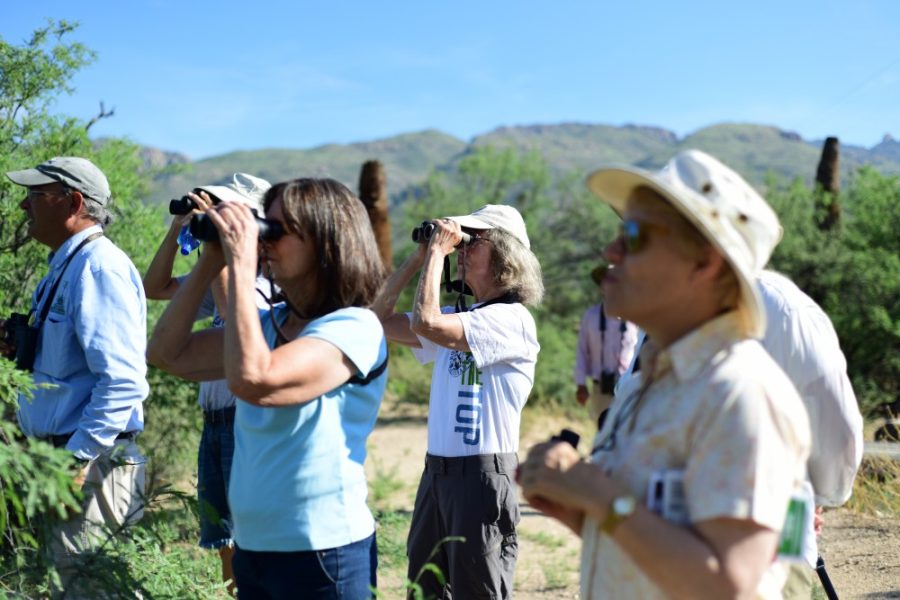Editor’s Note: The original headlined stated that the guided walk had no admission fee. The fee for the walk is $5. The headline has been updated to reflect this change. We apologize for this error.
The Roy P. Drachman Agua Caliente Regional Park is a desert oasis, a 101-acre aquatic and riparian habitat.
The park lies northeast of Tucson city limits and south of the Coronado National Forest. Amy Willer, a frequent visitor, takes her dog to the park about once a week. “I like the solitude,” she said. “But it’s just such a natural setting … I’m a birder so I enjoy that it attracts certain bird species that are migrating to the water area.”
Willer is in luck because the park hosts a bird walk guided by Jeffrey Babson, a Wildlife Viewing Program Specialist for the Pima County Department of Natural Resources, Parks and Recreation. “Wake up with the Birds” is a recurring event at the park.
Babson describes the park as part-public, part-wildlife reserve and part-historical. “We have picnic tables and barbecue grills,” Babson said, “We don’t allow any hunting or fishing here so we get a lot of wildlife … The history at this particular site goes back to the Hohokam era [Circa AD 1150-1250].”
There are three ponds within the park, each linked together by an artificial stream. Prior to the 1930s, there were two springs at the park: a “hot” spring for which the park is named, and a “cold” spring.
In the 1930s, the 100-foot space between the two springs was dynamited, causing less water to leave the cold spring. The hot spring is still functional but due to drought and the drilling of wells in the surrounding area, the spring has not flowed as much in recent years.
Every Thursday, excluding major holidays, Tucsonans can join Babson on his guided birding walk.
“Wake up with the Birds” is an event that makes use of the ponds and hot spring, which support the wildlife in the area.
The park itself has a variety of habitats. “We have some pure desert habitat with cacti and things like that where we’ll get a lot of resident birds,” Babson said. Occasionally, Herons and Egrets can be seen at the lake. Ducks are frequent, especially in the winter.
“Sometimes we get Belted Kingfishers, which are these sort of really small little birds that dive underwater to catch fish,” Babson said. “It’s pretty cool to watch.”
As for the park, the variety of birds changes with the season. “A lot of the birds you’ll see in June will be different than birds you’d see in January,” Babson said. “Some of them are here for the breeding season but they’ll migrate south for the winter; they’ll get replaced by birds that have come from the south that will spend the winter here.”
There are over 100 different birds recorded on the Agua Caliente Park Bird List, available online at their website.
“My approach is to try to get people outdoors and to enjoy the birds we see,” Babson said. “It’s not a contest to see how many birds we can see in an hour and a half, it’s more of ‘let’s go see whatever we can see and enjoy whatever it is we see.’”
The start time for “Wake up with the Birds” varies by month to better accommodate summer and winter. The bird walks will begin at 8 a.m. every Thursday this September and October, starting this week. Birders will need to register online and pay a $5 fee.
Not a birder? Agua Caliente Regional Park is home to a variety of other wildlife, including lizards, butterflies and dragonflies. The Pima County Department of Natural Resources, Parks and Recreation Department lists the programs and events of over 40 different parks, wildlife and otherwise, on their website.
“Come on out,” Babson said. “If you need binoculars, we’ll hand them to you. We’ll show you how to use them if you don’t know how to use them … We welcome anyone and everyone to come out.”
Follow Stefanie Nguyen on Twitter.









